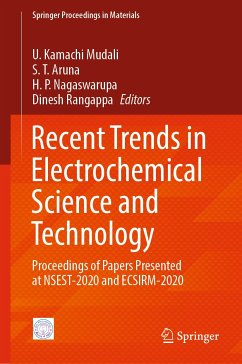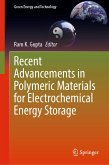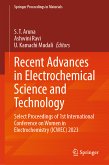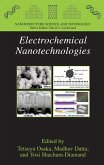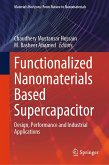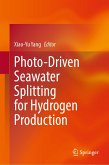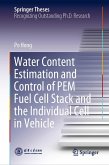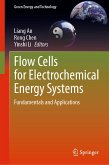Dr. U. Kamachi Mudali, Vice-Chancellor of VIT Bhopal University & Honorary Professor of Practice, IIT Madras is formerly Distinguished Scientist of Department of Atomic Energy (DAE), and Chief Executive & Chairman of Heavy Water Board, a flagship industrial unit of DAE. Dr. Mudali made pioneering contributions to advanced materials & coating technology development; corrosion science, engineering and technology; materials, process and equipment development for reprocessing applications; failure analysis, consultancy and societal contributions. He has 465 journal publications, 5 patents, and 9740 citations with an h-index of 44 and i-10 index of 246. He is recognized in the World's Top 2% scientists from India in the field of Materials, and is a Fellow of 12 professional associations. He has guided/coordinated 162 UG, PG and PhD students, and has published 21 Books/Proceedings. Dr. Mudali is decorated with several distinguished recognitions from India and abroad including: Distinguished Alumnus Award from IIT Bombay where he did M.Tech. (Corrosion Science & Engineering) in 1984, and PSG College of Technology, Coimbatore where he did M.Sc. (Materials Science) in 1982, GD Birla Gold Medal and Metallurgists of the Year Award from IIM & GoI, MASCOT National Award, Vasvik Award, INS Medal, Outstanding Faculty Award of HBNI, Homi Bhabha Science and Technology Award of Department of Atomic Energy, Fellow & Frank Newman Speller Award of NACE International, USA, the highest recognition and first Indian to get in the field of corrosion. Dr. S.T. Aruna is currently working as a Senior Principal Scientist at Council of Scientific and Industrial Research - National Aerospace Laboratories (CSIR-NAL), Bangalore, India. She has a Master's Degree in Chemistry from Mysore University (1994) and she secured the first rank and won 4 gold medals. She obtained her Ph.D. from the Indian Institute of Science (IISc), Bangalore in 1998. She worked as a postdoctoral fellow at Bar-Ilan University, Israel in the area of dye-sensitized solar cells from 1998-1999. She has authored ~ 106 research papers in international peer-reviewed journals, 9 patents, co-authored a book and written 10 book chapters and 4 encyclopedia chapters. Her research papers have been well-cited and her publications have an h-index of 40. Her name featured among 1494 Indian scientists in the list of top 2 per cent of the world scientists released by Stanford University in January 2021. Her current research interests include the development of tapecast ceramic substrates for electronics application, nanomaterials, plasma sprayed thermal and environmental barrier coatings, oxygen sensor and solid oxide fuel cells (SOFCs). She has guided 5 Ph.D. and 25 Masters` Students. Dr. Nagaswarupa H.P. is currently an Associate Professor in the Department of Studies in Chemistry, Davangere University, India. He obtained his Master's degree in Chemistry from Bangalore University (2002) and Ph.D. degree from Bharathidasan University, Trichy (2012). He has been teaching Chemistry for the undergraduate & postgraduate level since 18 years. He has guided 3 Ph.D. students and currently guiding six Ph.D. students. He has published over 160 research papers in national/international journals & holds 3 patents. His papers are well cited with an h-index of 31. He has organized more than 25 workshops/conferences at the national/international level. He is also a member of various committees for the inspection of new as well as old institutions. His areas of interest include Nano Science & Technology, Materials Science and Corrosion Science. Prof. Dinesh Rangappa received his M.Sc. and Ph.D. in Environmental Science from the University of Mysore, India. He obtained his second doctoral degree Dr. Engg., (Materials Science and Engineering, 2004) from Tokyo Institute of Technology, Japan. He has received JSPS Research Fellow award at AIST, Japan. He was deputed to Visvesvaraya Technological University (VTU), as a Special officer & PG Coordinator for VTU Bangalore Region. Since 2013, he is serving as Professor and Chairman, Department of Nanotechnology, VTU. Prof. Rangappa has significantly contributed to developing a novel process for bulk production of nanomaterials, engineering nanomaterials for energy storage, sensors and photovoltaic, photocatalysis, photoluminiscent, inorganic Nano-pigment, wastewater treatment and biomedical applications. He has published more than 120 papers in national and international journals (h-index-23), 8 book chapters and 2 patents granted. He has been awarded Prof. Satish Dhawan Karnataka State Award for Young Engineers - 2014, Pavan Nagapal Memorial Award 2015 and Gandhian Young Technological Innovation Award 2016, and Japan Society for the Promotion of Science (JSPS) Bridge Fellowship Award 2017.
Chapter 1: Benzotriazole Encapsulated Nanocontainer-Based Self-Healing Coatings for Corrosion Protection of Mild Steel.- Chapter 2: Effect of Metallic Ion Species on Nitric Acid Corrosion of Type 304L Stainless Steel.- Chapter 3: Effects of Strontium Addition on Corrosion Properties of Al-12Si Alloy.- Chapter 4: Evaluation of Corrosion Rate and Scratch Resistance in Chromium Alloyed Irons Influenced by Manganese Addition and Process Parameters.- Chapter 5: Stress Corrosion Cracking Behavior of Spring Steel in Aggressive Corrosion Environment.- Chapter 6: Effect of pH on Electrodeposition of Ni-Cd Alloy Coatings and their Anticorrosion Performance.- Chapter 7: A Study of Electrodeposited Gold Thin Films using a Confocal Laser Scanning Microscope.- Chapter 8: One-pot Solvothermal Synthesis of Spinel MgFe2O4 Nanoparticles as a Promising Cathode Material for Rechargeable Mg-ion Battery.- Chapter 9: Methanol ElectrooxidationActivity of Pt/C Catalyst Promoted by Ce-Gd-Zr-O Solid Solution.- Chapter 10: La- and Gd-doped CeO2 Nanoparticles as Electrolyte Materials for Intermediate Temperature Solid Oxide Fuel Cells.- Chapter 11: Ni-Fe Alloy Mesh as a Low Cost Oxygen Evolution Catalyst.- Chapter 12: Design of imprinting matrix for dual template sensing based on Molecularly Imprinted Polymer Technology.- Chapter 13: Recent Perspective and Applications of Electrode Materials for Electrochemical Sensing of Lead Ions.- Chapter 14: Voltammetric Response of Synthesized CuO Nanoparticles towards Dopamine.- Chapter 15: Electrochemical and Photocatalytic Applications of ZnO Nanoparticles Synthesized Using the Leaf Extract of Ricinus Communis.- Chapter 16: Template Free Electrochemical Synthesis of Multidimensional Copper/Copper Oxide Nanoparticles.- Chapter 17: Facile Fabrication of Stable Superhydrophobic and Conductive Carbon Black Coating.-Chapter 18: Green Synthesis and Characterization of Zinc Ferrite and Lanthanum- Doped Zinc Ferrite.- Chapter 19: Dielectric Properties of NixCu1-xFe2O4:PbZr0.52Ti0.48O3 Multilayered Nano-Composites.

